Juice vs. Smoothie: Which Is Healthier?
Juice vs. smoothie—what is the difference, and which one is healthier?
Both juices and smoothies are great ways to incorporate plant foods into your diet. However, smoothies are generally considered the better choice as they contain fiber and fewer carbs.
Discover the difference between juices and smoothies, and learn why you should regularly incorporate smoothies into your routine.
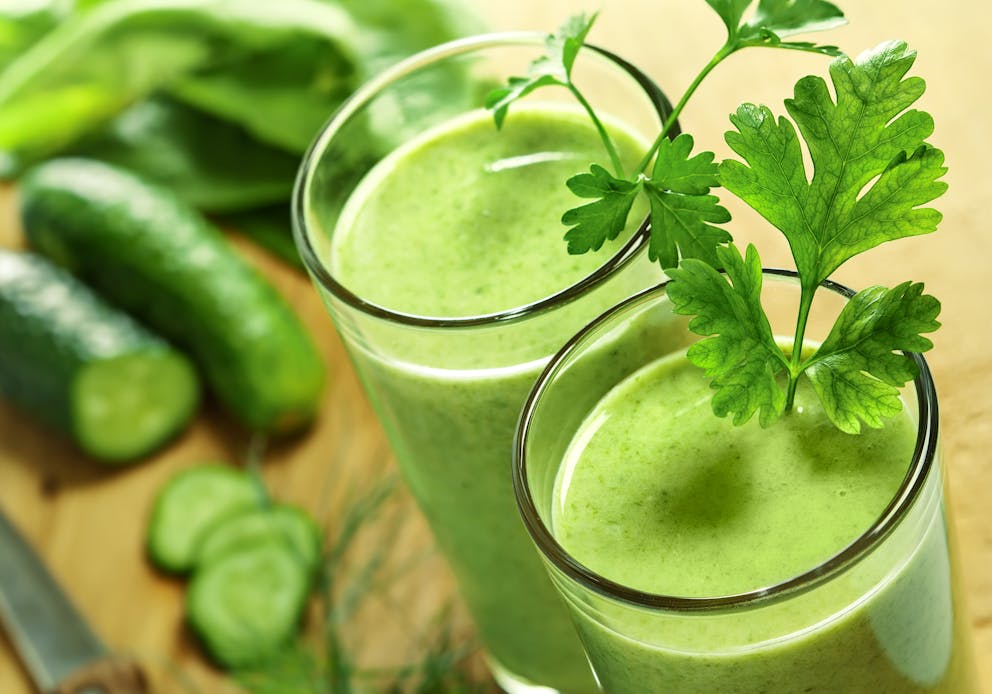
Juice vs. smoothie—what’s the difference?
At first glance, it may not seem like there’s much of a difference between juices and smoothies. However, there are significant differences in how they’re prepared, their benefits, and their nutritional value.
Juicing extracts the vitamins, minerals, and water from whole fruits and vegetables, while the skin, pulp, and seeds are discarded. Depending on the exact ingredients used, juices can be high in carbs, causing blood sugar and insulin spikes.
In contrast, smoothies are made by blending fruits or vegetables, which results in a beverage that contains fiber, pulp, and seeds. Smoothies are often used as a meal replacement, especially when prepared with Greek yogurt, nut butter, or protein powder.
While smoothies are generally considered more keto-friendly than juices, it’s important to prepare them with ingredients that won’t kick you out of ketosis.
Watch the video below to learn more about juicing on the keto diet.
Benefits of juice
Juices contain concentrated vitamins, minerals, and polyphenols. They can support overall health and help prevent nutrient deficiencies, which can lead to a wide range of health issues.
Juicing can make nutrients more bioavailable as your body doesn’t have to process the insoluble fiber in plant foods. This helps speed up digestion and enhances nutrient absorption.
Another benefit of juicing is that you can consume a large volume of fresh produce at once.
Vegetable juices can help meet the daily recommended intake of vegetables and provide a highly concentrated source of nutrients. This can be especially beneficial for those recovering from an illness or undergoing treatment for serious diseases such as chemotherapy.
Oncologists often recommend vegetable juices to cancer patients to help manage common chemotherapy side effects such as difficulties swallowing and nutritional deficiencies. Juices also provide dietary antioxidants, which play a crucial role in cellular health and may support the fight against cancer.
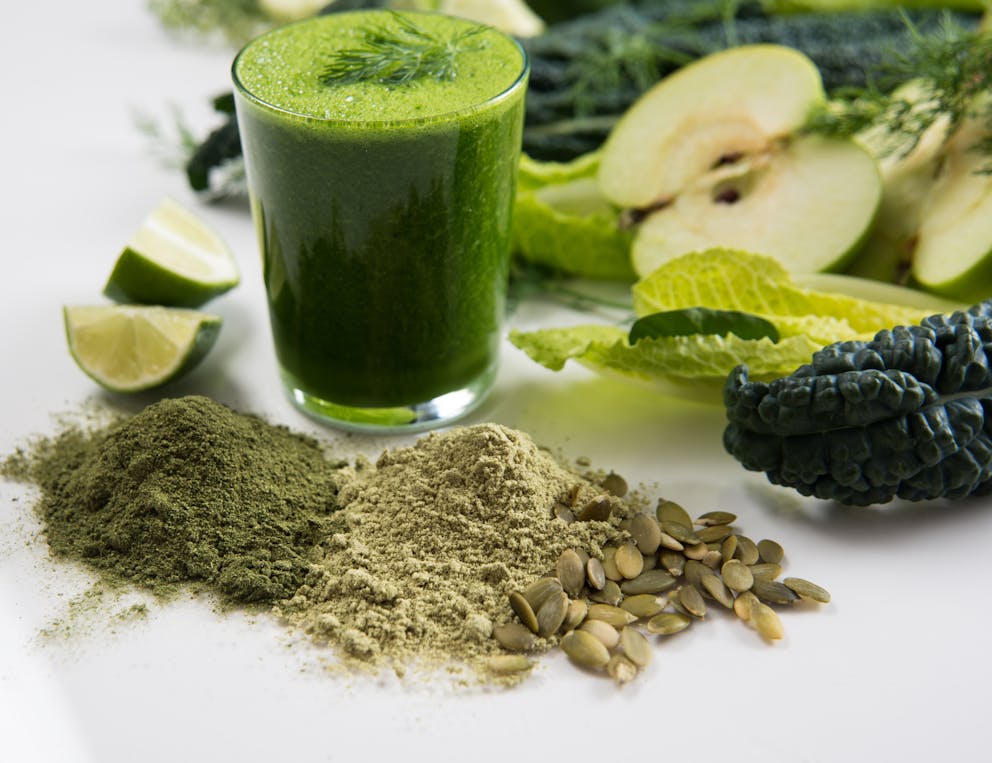
Downsides of juice
Juice lacks dietary fiber, which plays a crucial role in maintaining a healthy and diverse microbiome. By removing it, you forfeit the benefits of fiber for your gut and digestive health.
“Juicing removes fiber, which creates a fluid that consists primarily of carbohydrates, water, and nutrients,” explains Dr. Berg.
Because juices are high in carbs, they increase the risk of blood sugar and insulin spikes, linked to poor metabolic health and weight gain.
In addition, many people find that pure vegetable juice is too bitter, so they add fresh fruits or sugar to make juices more palatable. This increases the carb count even further and explains why some types of juice contain as much sugar as a can of Coca-Cola.
Additionally, juices lack key dietary components such as protein and fat. It’s best to avoid juice cleanses or juice diets, as they aren’t nutrient-dense enough and could risk malnutrition and nutrient deficiencies.
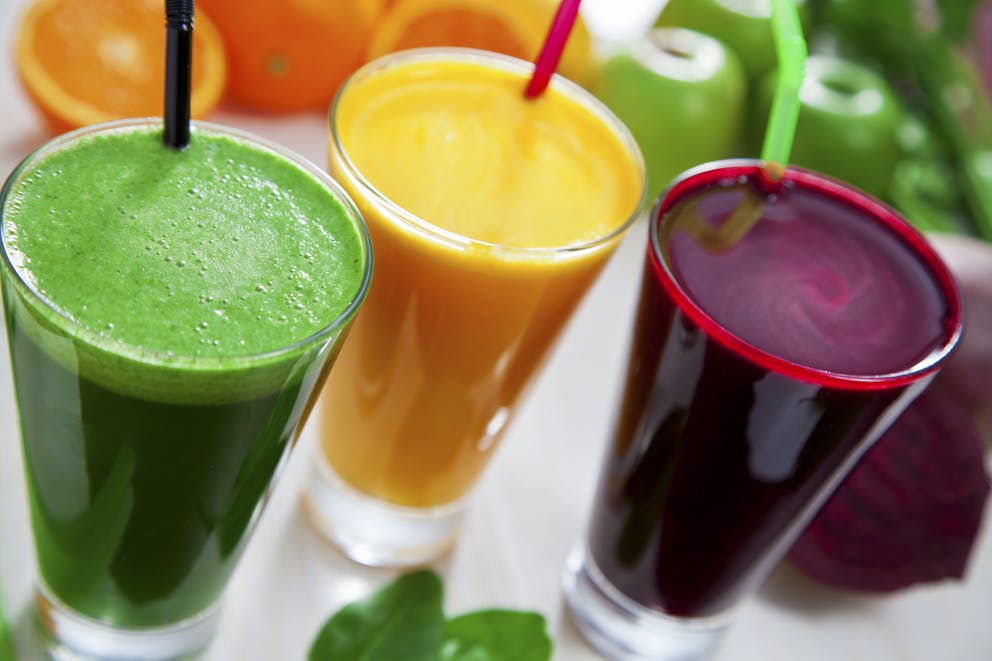
Benefits of smoothies
Smoothies contain more nutrients, calories, and fiber than juices, making smoothies a more well-rounded option that can regularly be incorporated into a healthy diet.
Although it’s best to focus on a diet rich in whole food, the occasional smoothie can serve as a nutritious meal replacement if prepared with healthy fat and protein, such as:
Avocado
Almond butter
Chia or flax seed
Coconut oil
Greek yogurt
Blending fresh fruits and vegetables with these ingredients can help keep you feeling full, avoid cravings, and support a healthy gut microbiome due to the high fiber content of smoothies.
Fiber also slows down the absorption of carbohydrates, which prevents blood sugar and insulin spikes and is crucial for weight loss and management.
However, it’s recommended to avoid smoothies with high-carb fruits such as pineapple, mango, or figs and focus on vegetables and berries to alleviate the bitterness of some green leafy vegetables.
Those looking to incorporate more vegetables into their diet often find drinking smoothies can help them consume five or more servings daily.
Downsides of smoothies
Smoothies tend to contain more calories than juices, which can be problematic for those trying to lose weight.
To improve the taste and texture of smoothies, many people add nut butter, yogurts, and even eggs. Though these ingredients enhance the nutritional value of smoothies, they also raise the caloric content, which may lead to weight gain, especially if consumed alongside meals.
In addition, some individuals may find it challenging to process the high fiber content of smoothies, which can lead to gastrointestinal issues such as abdominal pain, gas, and bloating.
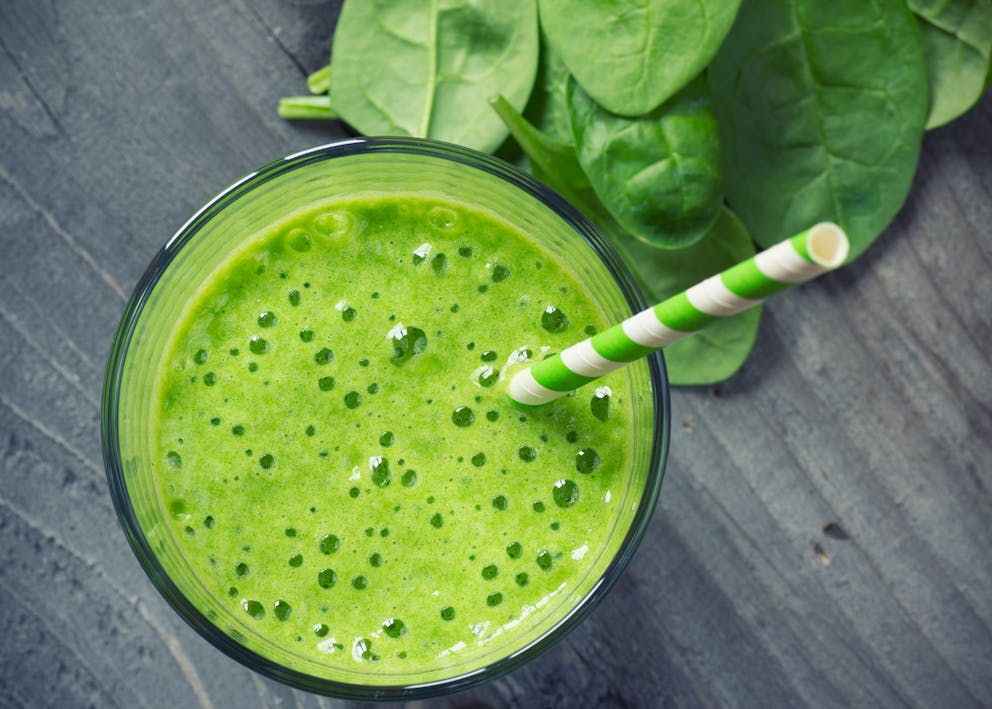
Which is better?
While juices and smoothies can both be beneficial, there are key differences in regard to vitamin and mineral content, digestibility, and overall health benefits.
Here’s how juices and smoothies differ and which option is the better choice for your health.
1. Vitamins and minerals
Juices and smoothies are both rich in essential vitamins and minerals.
However, juicing can improve the bioavailability of various nutrients as vitamins and minerals are primarily concentrated in the juice rather than the skin or pulp of fruits and vegetables.
Juicing vegetables may improve the absorption of health-promoting nutrients compared to blending them, which can be great for individuals at risk of malnutrition, poor digestive processes, and those recovering from illness.
2. Fiber
Unlike juices, smoothies contain fiber, which feeds beneficial gut microbes, supporting healthy digestion and immune function.
Research published in Frontiers in Nutrition links optimal dietary fiber intake to improved immune system functions and a lower risk of inflammatory conditions.
Inadequate fiber intake can negatively impact microbial gut diversity, which is associated with compromised immune defenses and poor digestive health.

3. Antioxidants
Smoothies typically have higher concentrations of phytochemicals than juices as they contain the pulp and skin, which are abundant in these antioxidant nutrients.
Antioxidants protect cells from the harmful effects of free radicals. These volatile metabolic by-products create oxidative stress, which has been linked to various health issues, including heart disease, multiple types of cancer, and diabetes.
A study published in Women Health concluded, “Processing fruits/vegetables may break down the cellular matrixes of the food, which makes antioxidants more available for absorption.”
4. Digestion
Juices and smoothies can benefit digestion in different ways.
If you have difficulty digesting fiber, juicing may help you obtain essential nutrients without side effects like bloating or gas.
Conversely, smoothies promote optimal digestion due to their high fiber content. A balanced microbiome thrives on adequate dietary fiber intake, and regularly consuming smoothies can help promote a healthy gastrointestinal tract and stimulate optimal digestive processes.
5. Carbs
Juices contain significantly more carbohydrates and sugars than smoothies, especially if they are prepared with fruits. This can cause blood sugar spikes linked to weight gain.
On the contrary, smoothies made with low-carb vegetables offer the benefit of dietary fiber to promote gut health while keeping blood sugar levels balanced.
For those who have difficulties digesting large amounts of fiber, celery juice may be a great alternative to smoothies as it’s low in carbs and won’t raise blood sugar or insulin levels as much as carrot or grapefruit juice.
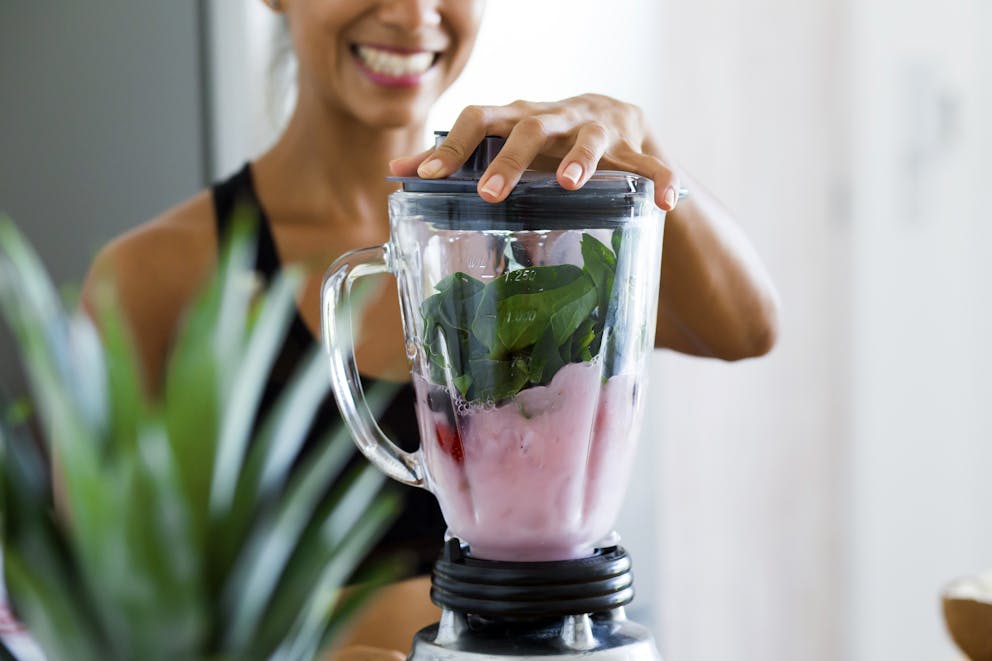
Key takeaways
Juice vs. smoothie—which one is healthier?
Juicing can make vitamins and minerals more bioavailable, while smoothies provide essential nutrients and dietary fiber. However, juices tend to be high in carbohydrates and sugars, which can cause significant blood sugar spikes.
Overall, smoothies prepared with low-carb vegetables and berries are generally considered the better choice for most people as they are an excellent source of health-promoting nutrients without the risk of blood sugar imbalances.
FAQ
1. Juice vs. smoothie—which is better?
Juicing can enhance nutrient absorption for those needing additional nourishment. However, fruit juices can spike blood sugar levels, leading to weight gain and poor metabolic health.
In contrast, smoothies offer essential nutrients and dietary fiber, which promotes optimal nutrient stores and supports digestive health.
2. Which has more carbs, juice, or smoothies?
Though juice can make vitamins and minerals more readily available, it contains significantly more carbs than smoothies. Individuals on a low-carb ketogenic diet may benefit from blending their vegetables rather than juicing them.
3. Can you drink juice while fasting?
No, you should avoid drinking juices while fasting as they are high in sugars and carbohydrates, which will break a fast.
4. Is it better to juice or blend on keto?
Most juices are high in sugars and carbs, which can spike your blood sugar and insulin levels and push you out of ketosis.
Smoothies made with low-carb vegetables, chia seeds, nut butter, or plant-based milk won’t significantly impact blood sugar levels, making blending the preferred choice for those on keto.
5. Is juicing more beneficial than blending?
No, blending is typically more beneficial than juicing. Fruit juices are high in sugar and can spike insulin levels. In contrast, blending preserves dietary fiber, supporting balanced blood sugar and insulin levels and promoting healthy digestive system function.
Sources
Previous blog
Is Buckwheat Gluten-Free?
Popular
08/21/2024
55K views
02/23/2025
46.3K views
11/18/2024
277.5K views
03/18/2024
11/21/2022




